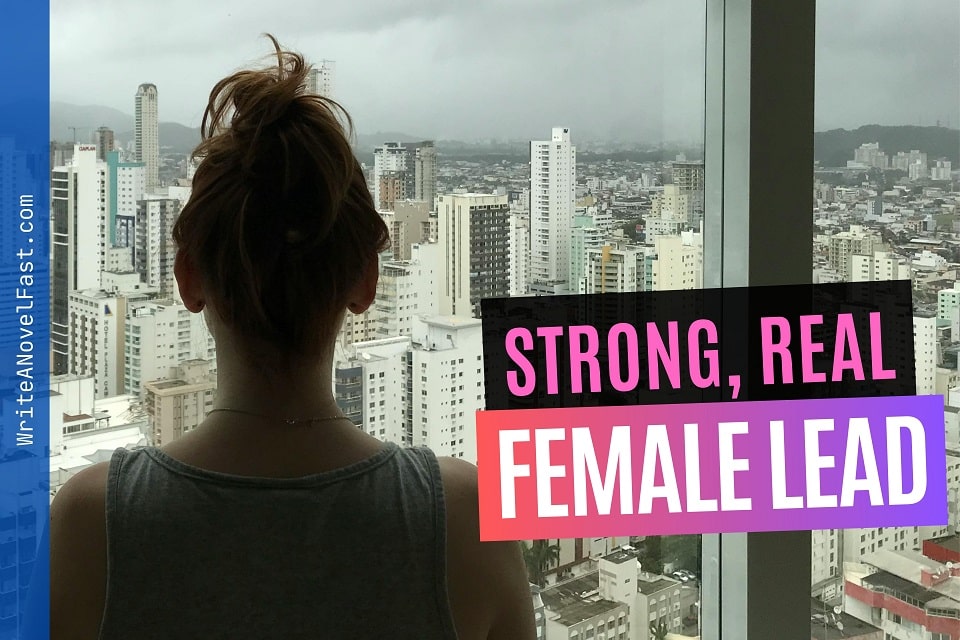There’s something unforgettable about a well-written female protagonist — someone who steps off the page and feels like a friend, a sister, or even a mirror of ourselves. Whether it’s Lizzy Bennet’s fierce wit or Eleanor Oliphant’s aching loneliness, relatable female characters leave a lasting impression not because they’re perfect, but because they’re real. That’s why creating relatable female protagonists is more than just a craft technique — it’s an emotional bridge between the writer and the reader.
If you’re a fellow fiction writer, book lover, or just someone who’s spent a few too many nights curled up with a good story, this one’s for you. Let’s unpack what makes a female protagonist truly resonate, and how you can build one who’ll live in your readers’ minds long after the final page.
Table of content:
- What Makes a Female Protagonist “Relatable,” Anyway?
- Flawed, Fierce, and Fully Human: Why Complexity Matters
- Backstory: The Invisible Thread That Connects
- In My Own Experience, I Found That…
- Relationships That Reveal (Not Just Romance!)
- Give Her Real-World Roots
- Final Thoughts: Write Her with Curiosity and Care
- FAQ: Creating Relatable Female Protagonists
What Makes a Female Protagonist “Relatable,” Anyway?
Before we dive into character traits or backstory elements, let’s get honest about what relatable really means in fiction. It doesn’t mean flawless. It doesn’t mean likable 24/7. It definitely doesn’t mean she has to represent “every woman.”
Creating relatable female protagonists starts with truth. Readers relate to vulnerability, emotional honesty, and real-world complexity. When your character makes mistakes, struggles with her choices, or wrestles with things we all feel — like insecurity, ambition, grief, or desire — that’s where the connection forms.
Think of Katniss Everdeen. She wasn’t written to be charming or polished. But her fierce loyalty to her sister and her quiet internal conflict made her someone readers could root for. That’s the power of relatability done right.
Flawed, Fierce, and Fully Human: Why Complexity Matters
One of the biggest pitfalls in writing female protagonists is trying to make them “strong” at the expense of making them layered. Yes, strength matters — but so does fear. So does regret. So does messiness.
Jo March (Little Women) wasn’t just a trailblazer — she was impulsive, prideful, and deeply emotional. These traits didn’t weaken her character; they made her unforgettable.
When you’re creating relatable female protagonists, give them contradictions. Let them want things they’re afraid to reach for. Let them say the wrong thing, hurt someone, fix it, and grow. Readers don’t want cardboard cutouts of empowerment. They want complexity wrapped in authenticity.
Backstory: The Invisible Thread That Connects
A rich backstory doesn’t mean dumping her entire life in Chapter One. It means giving her internal logic — a reason why she sees the world the way she does. Why is she guarded? Why does she self-sabotage? Why does she keep choosing the wrong person?
Take Offred from The Handmaid’s Tale. Her flashbacks slowly reveal a woman who had love, a child, a job, and freedom — all torn away. That pain is the silent heartbeat under every decision she makes. It doesn’t have to be dramatic, but it must be honest.
Creating relatable female protagonists means giving them a life before page one — even if you only show glimpses. It makes their present struggles land with weight.
In My Own Experience, I Found That…
…the more I stopped trying to write “ideal” female leads and just let them be, the more real they became. One of my early protagonists was so polished she practically sparkled — and she was boring as dry toast. But when I let another character fall apart after losing her job, say the wrong thing in a breakup, and cry over an old song, she came alive. That’s when readers started telling me, “She reminded me of me.”
So if you’re ever stuck, write her like you’d write a friend. Sit with her. Ask her what she’s afraid of. You don’t have to have all the answers. You just need to care.
Relationships That Reveal (Not Just Romance!)
A great way to deepen your character is through the relationships around her. Is she close to her mother? Does she have that one ride-or-die friend? Who challenges her in all the best (and worst) ways?
Creating relatable female protagonists means placing them in emotional context. Think of Anne Shirley’s friendship with Diana in Anne of Green Gables — tender, silly, supportive. Or Arya and The Hound (Game of Thrones) — rough-edged and begrudgingly respectful. These dynamics show who your character really is, even more than inner monologue sometimes can.
It’s not always about the love interest. The way she connects — or fails to connect — with others adds layers to her humanity.
Give Her Real-World Roots
If your female protagonist reflects something true — a struggle you’ve faced, a cultural challenge, a fear you don’t talk about — readers will feel that.
Characters like Starr Carter from The Hate U Give or Celie from The Color Purple are powerful because they don’t just exist in fictional bubbles. They echo real stories and real pain. That resonance is what makes them unforgettable.
You don’t need to write an “issue book” to do this. Just let her deal with things real people face — from imposter syndrome to infertility to figuring out who she really is at 40. Creating relatable female protagonists means giving them permission to be deeply human.
Final Thoughts: Write Her with Curiosity and Care
Creating relatable female protagonists isn’t about ticking boxes or chasing trends. It’s about listening — to yourself, to your readers, and to the character herself. It’s about letting go of control just enough to let her become who she wants to be.
Trust the process. Be curious about her contradictions. And above all, don’t be afraid to make her feel.
Because when she feels real to you, she’ll feel real to your readers.
FAQ: Creating Relatable Female Protagonists
Q1: Do all female protagonists need to be strong?
Not in the conventional sense. Emotional strength, quiet endurance, or even learning to ask for help can all be powerful forms of strength.
Q2: How do I avoid stereotypes when writing female leads?
Focus on specificity. Write a person, not a type. Give her unique goals, flaws, and voice.
Q3: Can I base a character on myself or someone I know?
Definitely — just be sure to give her room to grow into her own identity beyond the inspiration.
Q4: What makes a female character truly “relatable”?
Honesty. Emotional truth. And the ability to struggle, change, and keep going — just like the rest of us.



